Slo-Mo Replay Not Just for Major Productions
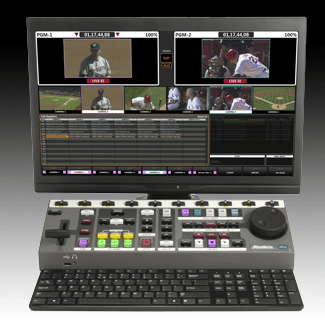
Specific features of the Mira that are tailored to fast and efficient instant replay operations include Active Instant Replay and Live Input Camera Switching.
NEW YORK — Today’s multicamera sports productions would be considered lacking without a high-quality instant replay system to help viewers analyze controversial plays during live events. Companies like Abekas and EVS have defined the category, with stellar variable frame rate controllers and server technology. This, of course, is accomplished with high-priced Super SloMo 3X camera systems from Grass Valley and Sony, which capture the action at high frame rates (up to three times real time) and then the scene is slowed down to 30 frames per second to give us sharply focused replays.
As smaller broadcasters and production companies doing regional college and high school sports coverage—with smaller budgets—begin to proliferate, the need has risen for a cost-effective way to produce replay similar in quality and effect to the higher priced systems. To this end, a number of companies have introduced new replay systems that cost a lot less.
"It was inevitable that sports production would move downstream to smaller projects and that these customers would need a more affordable way to produce replays and highlight reels," said Scott Carroll, Director of Public Relations for NewTek. "Traditional replay and slow-motion systems are expensive, often requiring a six-figure budget just to rent the equipment. And if you're a school, producer, or local broadcaster, it's nearly impossible to get in the game.
To be fair, Abekas and EVS do offer a lower-priced server system for smaller productions.
The Abekas Mira Instant Replay system, used by major colleges like the University of Illinois and Ole Miss, is designed to handle the very high bandwidth demands of nonstop recording from multiple cameras, with simultaneous instant replay on one or two output video channels.
Specific features tailored to fast and efficient instant replay operations include: Active Instant Replay into recorded live video streams, which provides quick and simple instant replay without the need to clip off anything; and Live Input Camera Switching on the active replay channel, for instant live switching between recorded camera angles during live replay or during clip playback, which streamlines replay operations.
At Ole Miss, freelance operators are contracted to operate an eight-channel Mira Instant Replay server. Dual Mira Control Surface control panels allow the crew to configure the Mira in ISO5 mode. This lets a single operator control five cameras with one output channel, while a second operator employs two channels to create playlists, interstitials and bumpers. This dramatically increases the number of replays shown to fans over the previous system. Mira also delivers a scoring drive summary, quarter and half-time highlight packages and other promotions throughout the game.
One of the key features of Mira that Ole Miss Sports Productions is using extensively is a streamlined workflow that incorporates its existing nonlinear edit systems. The ability after games to melt all the clips, together with four-channels of audio, into the NLE allows the editor to start producing highlight packages and their weekly TV show far earlier and eliminates the need to search through hours of content to find the big plays.
“As more and more college teams rely on Mira Instant Replay to capture the action on game day, we continue to add functionality to deliver even more value for money,” said Junaid Sheikh, CEO of Abekas. “Our customers tell us we have struck the right balance of sophisticated, feature-rich functionality with unmatched user-friendly operation.”
Both 2x and 3x super slow-motion cameras are supported. In the 8-channel server version, two 3X cameras with two replay channels with dissolves is possible.
EVS markets XTnano, which is a HD/SD slow motion replay server designed for live sports productions requiring simple workflows. Natively supporting DVCPRO HD and DVCPRO 50 codecs, XTnano is optimized for multiple applications, such as ingest of audio/video files, live feed recording, live slow motion and super motion, clipping and playlist playout control.
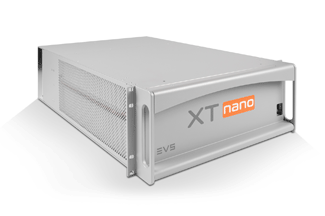
The EVS XTnano is a HD/SD slow motion replay server designed for live sports productions requiring simple workflows. With its proprietary loop recording technology and GigE networking capabilities, A/V files can simultaneously be played and transferred to other EVS servers as well as all standard NLE and archive systems. XTnano can also be configured with four full 3D/1080p video channels (dual link) offering all types of live slow motion replay and highlights editing functions.
NewTek offers a series of 3Play sports production solutions, including the model 425, an entry-level, four-input, two-output professional replay system, priced under $10,000 and compact enough for television stations, school teams and emerging leagues to produce local games anywhere.
Key features of the 3Play 425 include network-quality replay, slow motion and highlights in native HD and SD, and seamless mixing of live video with assets from media libraries in a compact 2RU design that fits easily in small control rooms and production vehicles of all sizes.
“3Play is designed for anyone producing sports who wants to create beautiful network-style, audience-engaging shows on a cost-conscious budget,” Carroll said.
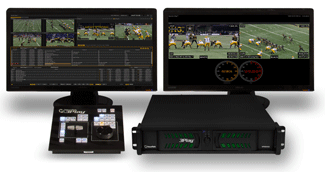
NewTek offers a series of 3Play sports production solutions Billerica, Mass.-based Broadcast Pix offers its ReVue, HD slow motion replay system that works with any Broadcast Pix integrated production system or independently in other production environments. Developed in collaboration with strategic partner EditShare, ReVue is available in two and four-channel configurations. It features SDI connectivity and up to eight tracks of embedded audio (with optional 1080p recording and playback). The system is housed in a 2 RU chassis and includes 8 TB of RAID 6 storage, which can be expanded up to 16 TB.
ReVue’s compact controller includes a jog/shuttle wheel for reviewing footage, with dedicated buttons for marking in and out points for playback. All video sources are played back in sync, so it is easy to cut between cameras and find the best replay angle. Playback speed is controlled manually with the fader bar, but three preset buttons allow users to assign specific speeds for more consistent slo-mo results. Other intuitive controls allow easy navigation between cameras, clips, and servers.
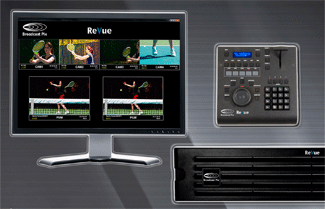
The ReVue system's two output channels can be configured as preview/program or as two programs. “When we decided to introduce a slo-mo replay system, our objective was to deliver a very high quality product at a price that nearly everyone can afford,“ said Steve Ellis, Broadcast Pix CEO. “ReVue provides a powerful, multi-source HD replay system that fits the budgets of schools and community channels.”
ReVue’s two output channels can be configured as preview/program or as two programs. With its built-in multi-view, ReVue provides monitors for all active sources, plus preview and program windows. ReVue’s on-screen user interface makes it easy to keep track of marked clips and replays. Plus, Broadcast Pix integrated production systems can trigger ReVue playlists directly from the production switcher.
Tightrope Media Systems now markets a low-cost 2x2 channel version of its Zeplay slow-motion instant replay solution for sports production on a tight budget (the company also offers a 4x4 channel version). The new version brings the same rock-solid stability, ease of use and expansive feature set of its 4x4 sibling at a much lower cost of entry--roughly half the price.
“We have found that many customers don't require the four-in, four-out, eight-angle support that our original Zeplay solution offers,” said Steve Israelsky, broadcast solutions lead, Tightrope Media Systems. “A large cross section of our customer base in the local cable market was being underserved in this sector.╩ The 2x2 Zeplay gives these and other customers, including small-to-mid sized venues and colleges, an affordable, feature-rich and reliable solution to enhance the sports fan experience. It also gives our 4x4 customers another option if they want to add more angles at a lower price.”
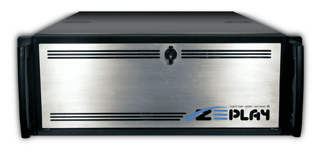
Tightrope Media Systems now markets a low-cost 2x2 channel version of its ZEPLAY slow-motion instant replay solution for sports production on a tight budget. Both Zeplay units incorporate new features in the Zeplay 3.0 release.╩ This includes a new export capability that allows production staff to export entire multi-angle sequences as opposed to individual clips, making it easier to share engaging content (and game-changing moments) immediately in an edited sequence as opposed to a series of individual clips.
Zeplay 3.0 also adds a number of operator-oriented refinements to the sequence editor. Individual clip speeds across sequences have always been variable, allowing operators to show play highlights from one angle at full speed; and then show the culmination of the play in slow motion from a different angle.╩ Zeplay users can now specify a default rate for the entire sequence, and then modify that speed from the T-Bar as the sequence plays out.╩ Zeplay 3.0 also includes an enhanced audio capability to assist in editing the highlight sequences, as well as improvements in the storyboard and editing window layouts
In addition to companies like EVS, with its XT3 server, other companies now offer systems that support UHDTV (3,840 x 2160 resolution) productions as well. A Belgium-based company called I-MOVIX has introduced X10 UHD, a 4K ultra-slow motion system that supports both continuous super slow motion and ultra slow motion at frame rates of up to 1,000 fps.
Combining the core X10 ultra-motion technology with Vision Research’s Phantom Flex4K camera, X10 UHD supports operation in a range of modes to meet differing production requirements, and can be instantly reconfigured for new 4K or HD shooting scenarios.
For very high-frame rate ultra slow motion in 4K sports coverage, the system operates in USM mode to deliver instant replays of up to 1,000 fps. For continuous non-stop recording, SSM mode delivers up to 120 fps at 4Kp60. When operating in HD resolutions (1080p or 1080i) X10 UHD offers up to 600 fps in continuous SSM mode, and up to 2,000 fps in USM mode. The system can also complement these specialized applications by performing in a conventional live camera role.
“Versatility, quality and performance are equally important for a leading-edge 4K ultra-motion system,” said Laurent Renard, CEO of I-Movix. “Thanks to the very fruitful relationship we have with Vision Research, we are able to offer broadcasters a system that outstrips the competition in every respect, with better ROI because of the many different ways in which it can be used.”
The good news for customers is that high-quality, slow-motion replays are no longer just for six-figure budgets. These new systems allow productions to drastically slash their replay and slow motion equipment costs (in some cases by more than 60 percent), and the smallest of production teams to enter the field of industry-standard slow motion and instant replay capabilities.
“While traditional vendors continue to build expensive replay systems that mimic what is essentially the way people used with tape, our approach is to architect single, integrated systems capable of handling many of the tasks that would normally require dozens of expensive component products and a sizable production crew,” said Dr. Andrew Cross, chief technology officer for NewTek. “We’ve now made 3Play 425 broadly accessible to smaller venues, teams and schools, so that producers who previously couldn’t even consider network-style replay can get in the game and look just like a major sports broadcaster.“
Get the TV Tech Newsletter
The professional video industry's #1 source for news, trends and product and tech information. Sign up below.
